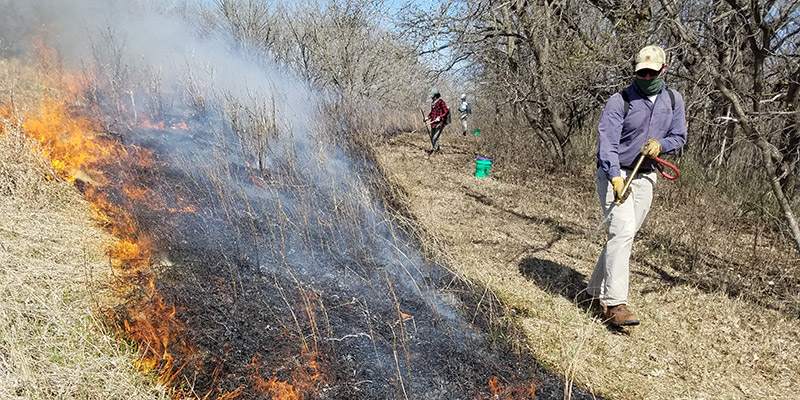
Fire shapes the physical structure and species diversity of ecosystems worldwide. For the past several thousand years in North American, tallgrass prairie, frequent fires maintained grassland habitat and contributed to the diversity of birds, mammals, insects, and plants that are found in prairies today. Yet, widespread habitat loss and the elimination of fire are causing native plant populations to decline in the few prairie patches that remain. Prescribed burns promote native plants. They could do this by enhancing germination and plant survival after fire or enhancing reproduction--flowering and pollination. Our research project investigates how prescribed fire influences plant reproduction and population dynamics within fragmented tallgrass prairie remnants in western Minnesota. Specifically, our research examines how prescribed burns affect spatial and temporal mating opportunities, pollination, and seed production in several perennial prairie plant species. Additionally, we are using 25 years of demographic data from purple coneflower (Echinacea angustifolia) to parameterize demographic models and quantify the extent to which improved germination and survival vs. enhanced reproduction after fire contribute to plant population growth and persistence. This research produces valuable information for natural resource managers, including guidelines for how to promote prairie plants and pollination with prescribed fires. (Wagenius, Beck, Richardson, and many collaborators)

